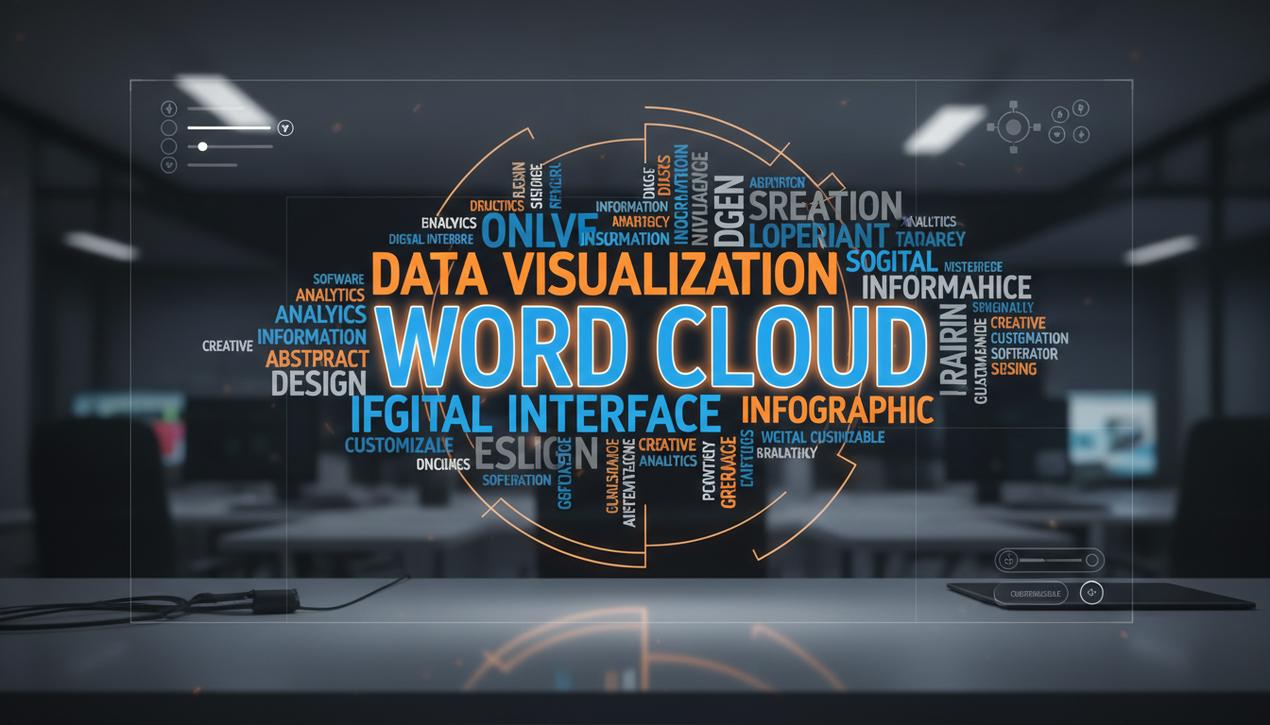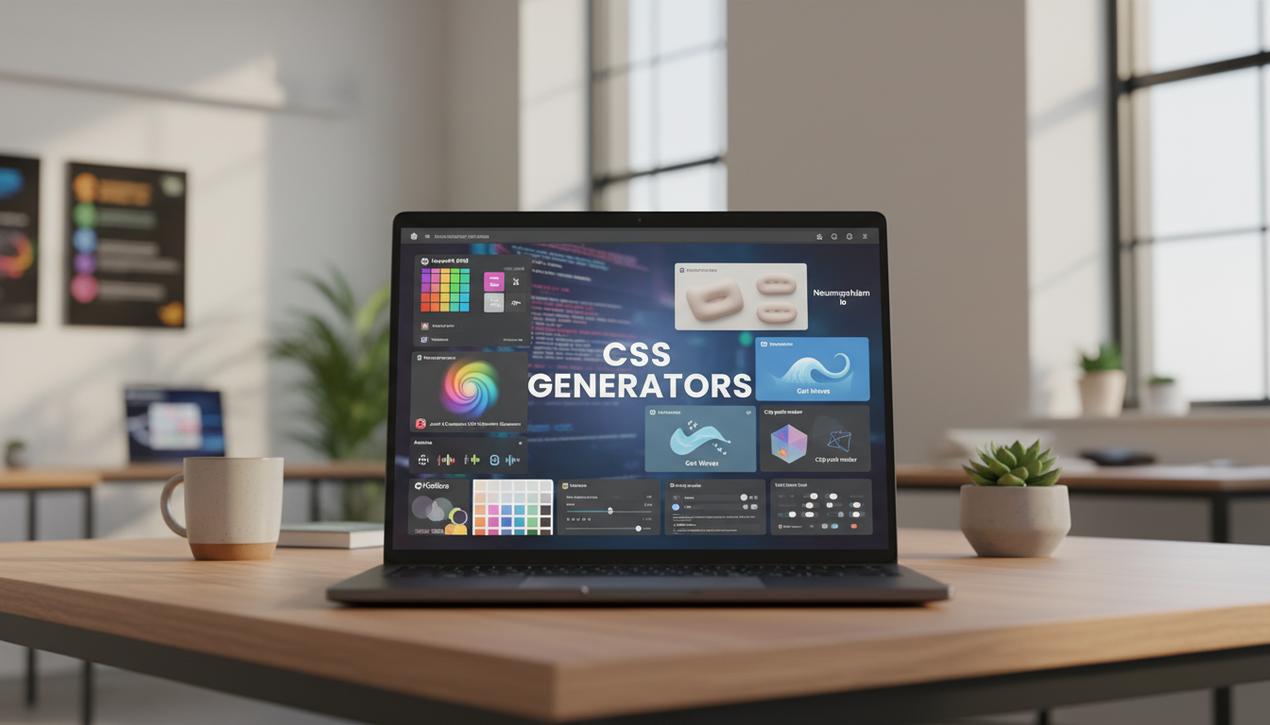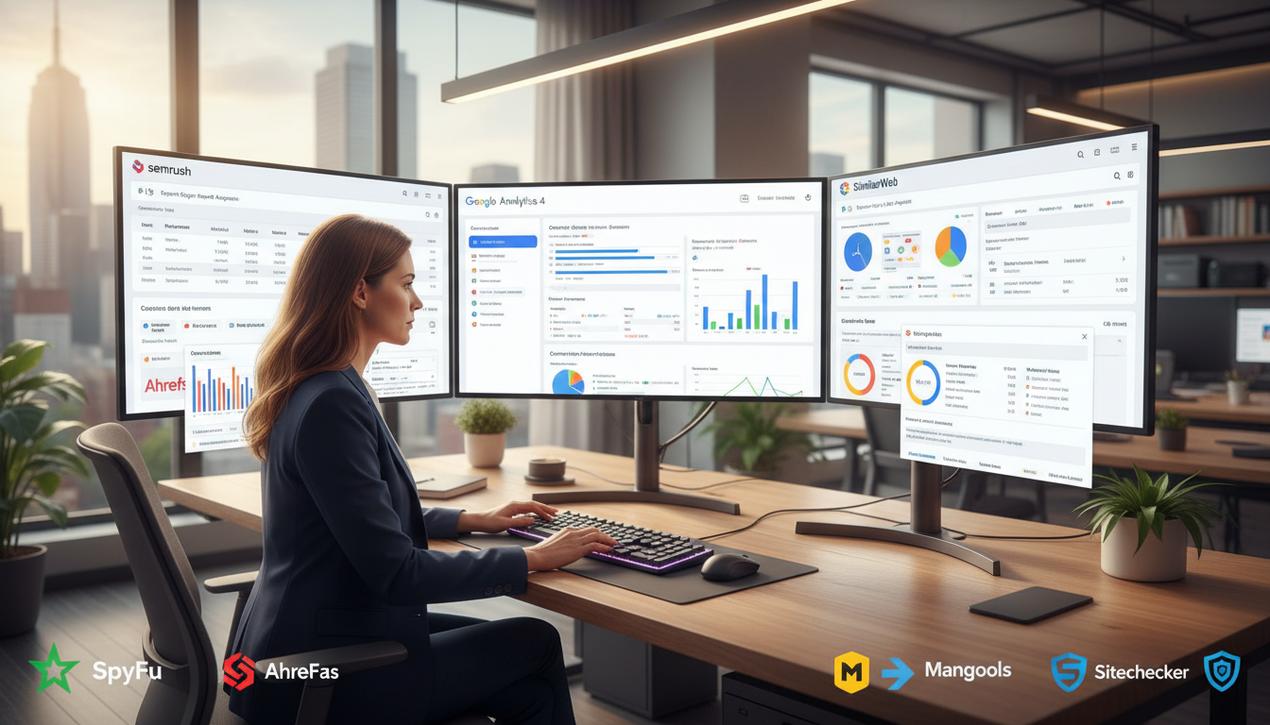The Complete Guide to Word Cloud Generators in 2025


In the age of information overload, synthesizing large amounts of text has become a major challenge. Whether you’re analyzing customer feedback, identifying keywords in an article, or simply illustrating a concept, data visualization is essential. In 2025, visual content is processed by the human brain 60,000 times faster than text. This is where word clouds come into play. Far from being mere aesthetic gadgets, they are powerful semantic analysis tools that transform raw text into an immediate and impactful visual representation. The most frequent words appear larger, offering an instant understanding of dominant themes. This comprehensive guide not only introduces the best free tools for creating word clouds but also explores their professional applications and best practices to maximize their impact.
Why Integrate Word Clouds into Your Strategy?
Using a word cloud goes far beyond simply decorating a presentation. It is a strategic tool for communication and textual data analysis. In marketing, for example, analyzing customer verbatims with a word cloud can instantly reveal the most common points of satisfaction or friction. In search engine optimization (SEO), it helps visualize the keyword density of a page to check its relevance to a target query. For a manager, summarizing internal survey responses in this format can highlight the main concerns of their teams anonymously and visually. The strength of a word cloud lies in its ability to democratize the analysis of unstructured data, a field explorable with other essential data mining tools.
The 12 Best Tools to Create a Word Cloud
To help you transform your text into impactful visuals, we have selected 12 word cloud generators, ranging from the simplest to the most comprehensive, all available for free online.
1. WordArt.com
Formerly Tagul, WordArt is one of the most comprehensive and creative tools on the market. Its main strength lies in extreme customization: you can use predefined shapes, upload your own image as a mask, and even create animated word clouds where words react to a mouseover. The interface takes a little getting used to, but the creative possibilities are nearly endless.
2. MonkeyLearn WordCloud Generator
This tool goes beyond simple word frequency. Powered by artificial intelligence, MonkeyLearn can detect relevant multi-word phrases (n-grams) and group words by theme or sentiment. It is particularly powerful for analyzing customer feedback because it can distinguish between “good” and “not good.” It’s an excellent choice for a more in-depth semantic analysis.
3. WordClouds.com
Highly comprehensive, WordClouds.com is a versatile generator with a feature-rich interface. It allows you to import text from a file (PDF, Word), a URL, or paste it directly. It offers a vast gallery of shapes, fonts, and color themes. An interesting feature is the ability to make the words in the cloud clickable links, ideal for interactive web use.
4. Nuagedemots.co
Considered a benchmark in the French-speaking world, this tool shines with its simplicity and efficiency. It allows you to paste text or a list of words and customize the cloud’s shape (with many icons available), colors, font, and word orientation. Its interface is modern and intuitive, and you can download the final image in PNG, JPG, or WebP format for free without registration.
5. Free Word Cloud Generator
This tool stands out with its clean, technical interface that will appeal to those who prioritize functionality over a cluttered aesthetic. It offers good customization options for fonts and colors, and the result is always very clean. A notable advantage is the ability to create a free account to save your creations and return to them later.
6. Tagxedo
Tagxedo turns word clouds into true works of art. It is famous for its ability to generate clouds from multiple sources: URLs, Twitter handles, news articles, RSS feeds, and more. You can then apply highly specific shapes (portraits, animals, world maps) for a spectacular visual result. It requires Microsoft Silverlight, which can be a limitation on some modern browsers.
7. Infogram
Much more than a simple word cloud generator, Infogram is a complete data visualization suite. Its word cloud module is simple but effective and integrates perfectly into larger infographics or dashboards. It’s the ideal tool if you want to insert your word cloud into a report or presentation containing other charts.
8. ABCYA
With its fun and colorful interface, ABCYA was originally designed for an educational audience, but its simplicity makes it very effective for quick professional use. The “Randomize” button is particularly useful for quickly testing different color and font configurations until you get a result you like. The free version is more than sufficient for most needs, with a premium version available for more options.
9. WordItOut
Simplicity is the key with WordItOut. You paste your text, click “Generate,” and the cloud appears. The tool then allows you to customize the colors, font, and filter out words you don’t want to include. It doesn’t offer complex shapes, focusing instead on the classic and effective word cloud.
10. TagCrowd
TagCrowd is a minimalist and fast tool, perfect for a raw analysis without frills. It allows you to paste text, provide a URL, or upload a file. You can set the maximum number of words to display and see the text frequency list next to the visual. The output is basic but very readable.
11. Awario
Offered by a company specializing in social media monitoring, Awario’s generator is simple and straightforward. It is designed for those who need a clean visual quickly, without getting lost in a myriad of options. It is perfect for illustrating a blog post or a presentation slide in just a few clicks.
12. Vizzlo
Similar to Infogram, Vizzlo is a professional charting platform that includes a word cloud generator. Its strength lies in ensuring a consistent graphic style if you are creating multiple visuals for the same document. The tool is optimized for corporate presentations and reports.
How to Create a Word Cloud That Makes Sense
An effective word cloud is not just aesthetically pleasing; it is, above all, readable and relevant. To achieve this, simply copy-pasting text is not enough. Data preparation and design considerations are necessary to convey a clear message.
Clean and Prepare the Source Text
The first and most crucial step is text cleaning. You must remove what are known as “stop words”—the articles, pronouns, and conjunctions (the, a, an, of, and, etc.) that are very frequent but carry no semantic weight. Most tools offer an automatic filter, but a manual check is often useful. Also, consider grouping words from the same family (e.g., “manage,” “management,” “managing”) under a single term if your tool allows, so as not to dilute their importance.
Choose a Relevant Shape and Colors
Shape and color are not just aesthetic choices; they should reinforce your message. If you are analyzing tweets about a brand, using its logo as the shape for the word cloud can be very powerful. The colors must respect the principles of readability: use contrasting hues between the words and the background. A limited color palette (2-3 colors) is often more professional and less distracting than a rainbow of colors.
Adapt the Visual to its Context
The context in which your word cloud will be displayed dictates its design. For a formal presentation using top free PowerPoint templates, a sober word cloud will be more appropriate. For communication on social media or in a blog post, a more creative design with original shapes and words oriented in different directions can better capture attention. The important thing is that the main message remains immediately identifiable.
Word cloud generators have evolved considerably, moving from simple visual toys to genuine decision-making aids. Whether you are a marketer, data analyst, researcher, or manager, they offer you a quick and intuitive method for extracting the essence of a large volume of text. By choosing the right tool for your needs and following a few simple design rules, you can transform raw data into clear and engaging information. Feel free to experiment with the various platforms listed to find the one that best suits your style and objectives, and start making your data speak.




